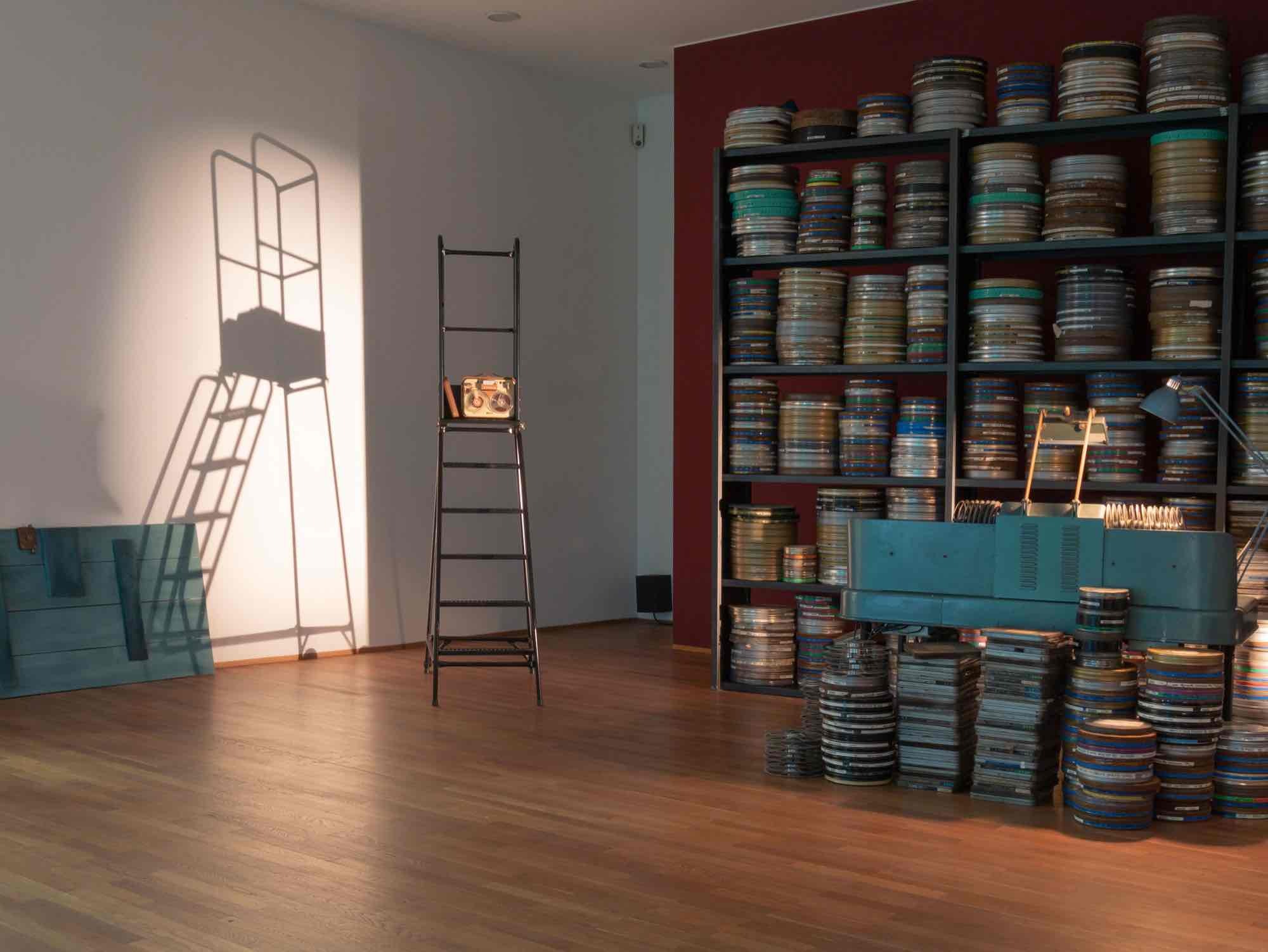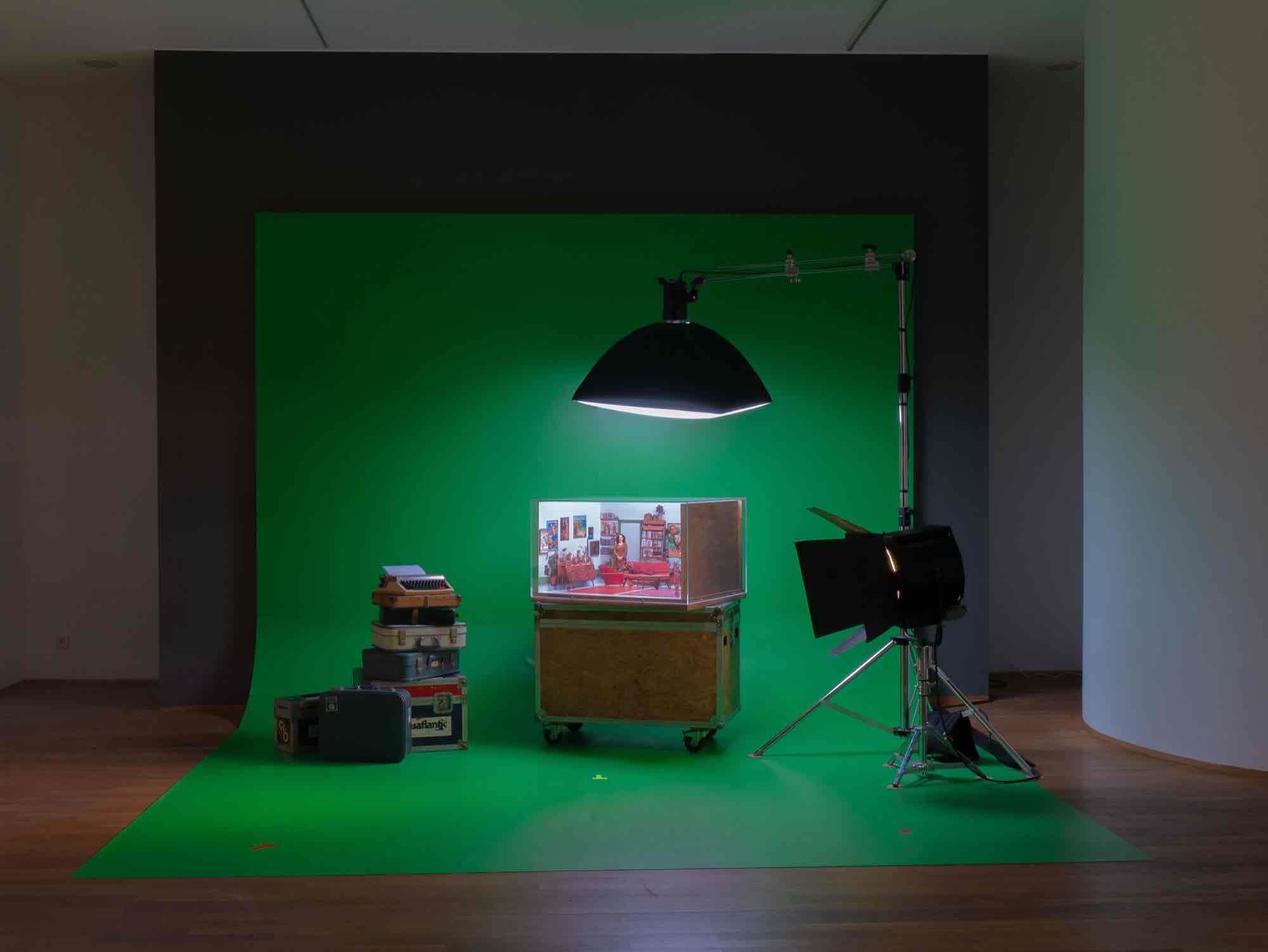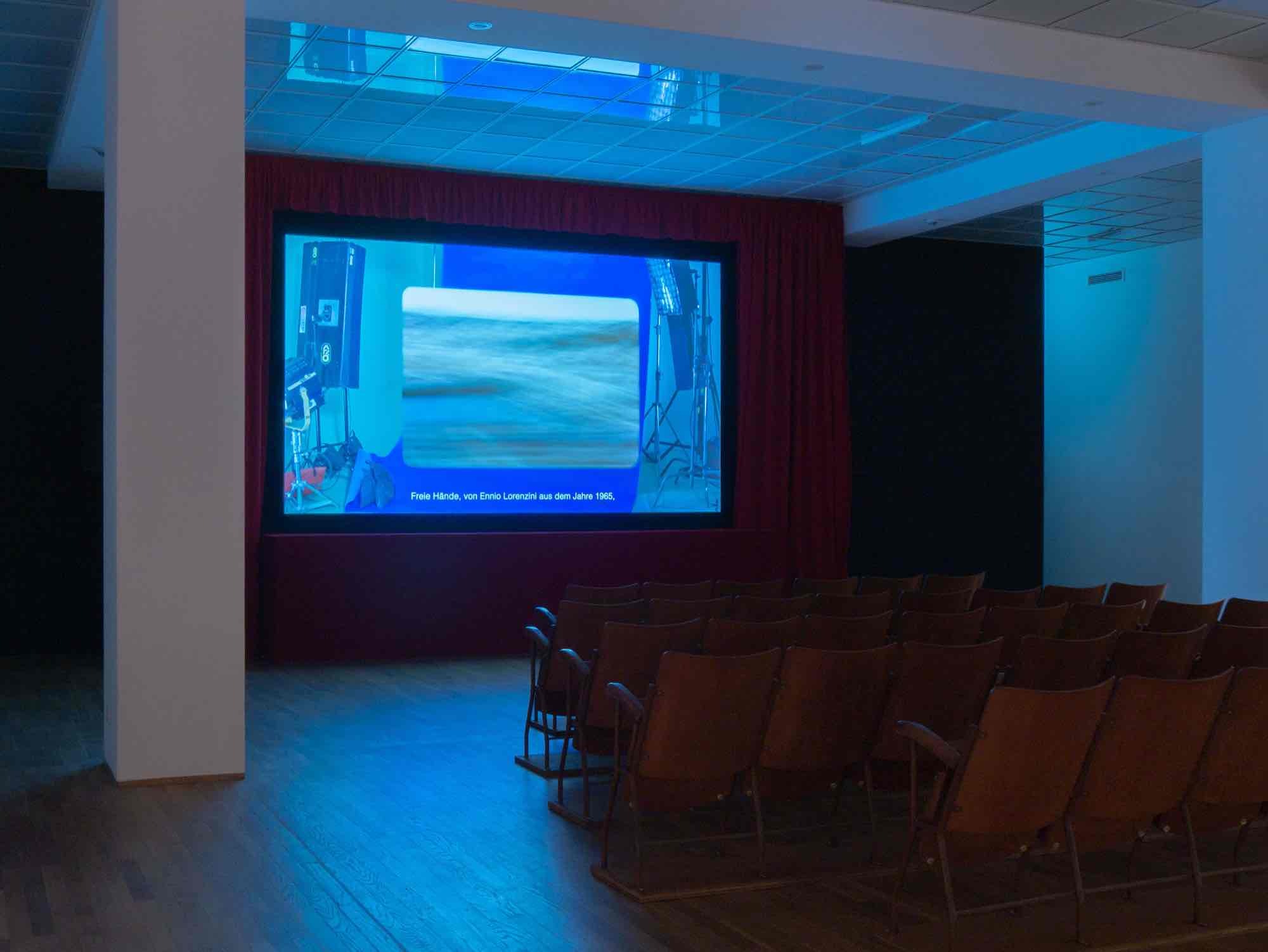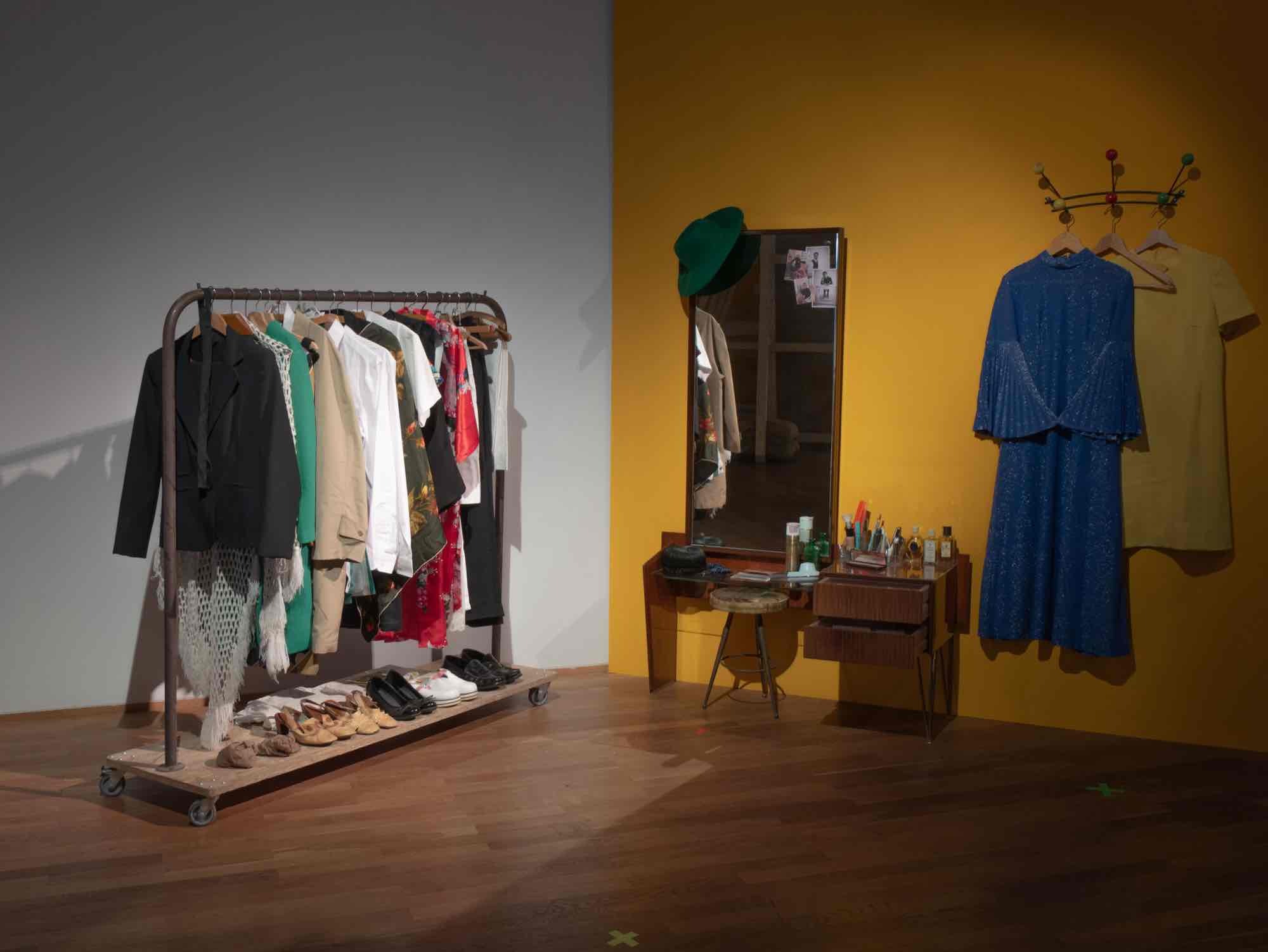Zineb Sedira
Dreams Have No Titles
24 Feb - 30 Jul 2023

Zineb Sedira, Installation view from the Exhibition Dreams Have No Titles at the Hamburger Bahnhof – Nationalgalerie der Gegenwart, Berlin, 2023
© Mathieu Carmona
© DACS, London 2023
© Mathieu Carmona
© DACS, London 2023

Zineb Sedira, Installation view from the Exhibition Dreams Have No Titles at the Hamburger Bahnhof – Nationalgalerie der Gegenwart, Berlin, 2023
© Mathieu Carmona
© DACS, London 2023
© Mathieu Carmona
© DACS, London 2023

Zineb Sedira, Installation view from the Exhibition Dreams Have No Titles at the Hamburger Bahnhof – Nationalgalerie der Gegenwart, Berlin, 2023
© Mathieu Carmona
© DACS, London 2023
© Mathieu Carmona
© DACS, London 2023

Zineb Sedira, Installation view from the Exhibition Dreams Have No Titles at the Hamburger Bahnhof – Nationalgalerie der Gegenwart, Berlin, 2023
© Mathieu Carmona
© DACS, London 2023
© Mathieu Carmona
© DACS, London 2023

Zineb Sedira, Installation view from the Exhibition Dreams Have No Titles at the Hamburger Bahnhof – Nationalgalerie der Gegenwart, Berlin, 2023
© Mathieu Carmona
© DACS, London 2023
© Mathieu Carmona
© DACS, London 2023

Zineb Sedira, Installation view from the Exhibition Dreams Have No Titles at the Hamburger Bahnhof – Nationalgalerie der Gegenwart, Berlin, 2023
© Mathieu Carmona
© DACS, London 2023
© Mathieu Carmona
© DACS, London 2023

Zineb Sedira, Installation view from the Exhibition Dreams Have No Titles at the Hamburger Bahnhof – Nationalgalerie der Gegenwart, Berlin, 2023
© Mathieu Carmona
© DACS, London 2023
© Mathieu Carmona
© DACS, London 2023

Zineb Sedira, Installation view from the Exhibition Dreams Have No Titles at the Hamburger Bahnhof – Nationalgalerie der Gegenwart, Berlin, 2023
© Mathieu Carmona
© DACS, London 2023
© Mathieu Carmona
© DACS, London 2023

Zineb Sedira, Installation view from the Exhibition Dreams Have No Titles at the Hamburger Bahnhof – Nationalgalerie der Gegenwart, Berlin, 2023
© Mathieu Carmona
© DACS, London 2023
© Mathieu Carmona
© DACS, London 2023
Zineb Sedira's "Dreams Have No Titles" her project for the French pavilion at the 59th Venice Biennale, has its international debut in Germany at the Hamburger Bahnhof. The interplay of film, sculpture, photography and performance interweaves the Franco-Algerian Artist shares her own biography with the history of activist films in the context of France, Algeria and Italy.
For its adapted version at Hamburger Bahnhof, Sedira has conceived the presentation of “Dreams Have No Titles” as a film studio with fragments of movie sets from iconic productions that played a significant role in historical liberation struggles from the 1960s onwards. Through film, sculpture, photography, sound, collage and live performance, the exhibition revisits significant scenes from the diverse repertoire of militant cinema in Algeria and beyond, where filmmaking was employed as one of various decolonization strategies.
Upon entering the exhibition space, the visitors find themselves immersed by the décor of a dance hall from the 1930s with a large bar, flanked by brassiere tables and chairs. Half-full wine glasses and ashtrays signal the unfolding of an ongoing scene. Tango dancers occupy the space in a reenactment of a scene from Ettore Scola’s “Le Bal” (1983), one of the several films that Sedira revisits in her installation. As one makes their way through various film sets from Gillo Pontecorvo’s iconic “Battle of Algiers” (1966), to Luchino Visconti’s 1967 film adaptation of Albert Camus’ “L’Etranger”, they eventually fall into into a one-on-one reproduction of Sedira’s living room in her house in Brixton, London. The TV is on. Friends of Sedira’s can be seen on the screen engaged in deep conversation. At the very back of the exhibition space, Sedira’s film from which the exhibition takes its title is playing in a space that pays homage to her childhood cinema in the Parisian suburb of Gennevilliers, where the artist’s father first introduced her to the world of cinema and its endless wonder. Several of Sedira’s artist, writer, musician, and curator friends, including the curators of the exhibition at Hamburger Bahnhof, appear on the screen embodying various characters from snippets of the films Sedira has restaged for her project.
Shaped by her family experience of emigrating from Algeria to France, her growing up in Paris and eventually moving to London in 1986, Sedira addresses, often with humor, a number of pressing issues ranging from the critique of colonial legacies to the ongoing debate about integration, racism, and globalization. In line with her practice to date, she overlaps auto-biographical narrative with fiction and documentary to shed light on past and present international solidarities and to pay tribute to the individuals and communities who opened up the possibilities of cinema as a form of emancipation and a tool of resistance.
By highlighting existing North-South Post-Independence solidarity networks, Sedira goes resolutely beyond the bipolar “East-West” division of the Cold War period or the problematic designation of certain countries as “Third World” nations. Instead, Sedira’s project is a celebration of these movements and the political courage they embody as societies across the globe face the repercussions of unforgiving political and historical struggles. Her exhibition mirrors a “ball” to which she invites her spectators – to see her dance in order to resist, mourn, and dream. Yet, her dreams have no titles.
Curated by Yasmina Reggad, and Sam Bardaouil and Till Fellrath, directors Hamburger Bahnhof – Nationalgalerie der Gegenwart.
For its adapted version at Hamburger Bahnhof, Sedira has conceived the presentation of “Dreams Have No Titles” as a film studio with fragments of movie sets from iconic productions that played a significant role in historical liberation struggles from the 1960s onwards. Through film, sculpture, photography, sound, collage and live performance, the exhibition revisits significant scenes from the diverse repertoire of militant cinema in Algeria and beyond, where filmmaking was employed as one of various decolonization strategies.
Upon entering the exhibition space, the visitors find themselves immersed by the décor of a dance hall from the 1930s with a large bar, flanked by brassiere tables and chairs. Half-full wine glasses and ashtrays signal the unfolding of an ongoing scene. Tango dancers occupy the space in a reenactment of a scene from Ettore Scola’s “Le Bal” (1983), one of the several films that Sedira revisits in her installation. As one makes their way through various film sets from Gillo Pontecorvo’s iconic “Battle of Algiers” (1966), to Luchino Visconti’s 1967 film adaptation of Albert Camus’ “L’Etranger”, they eventually fall into into a one-on-one reproduction of Sedira’s living room in her house in Brixton, London. The TV is on. Friends of Sedira’s can be seen on the screen engaged in deep conversation. At the very back of the exhibition space, Sedira’s film from which the exhibition takes its title is playing in a space that pays homage to her childhood cinema in the Parisian suburb of Gennevilliers, where the artist’s father first introduced her to the world of cinema and its endless wonder. Several of Sedira’s artist, writer, musician, and curator friends, including the curators of the exhibition at Hamburger Bahnhof, appear on the screen embodying various characters from snippets of the films Sedira has restaged for her project.
Shaped by her family experience of emigrating from Algeria to France, her growing up in Paris and eventually moving to London in 1986, Sedira addresses, often with humor, a number of pressing issues ranging from the critique of colonial legacies to the ongoing debate about integration, racism, and globalization. In line with her practice to date, she overlaps auto-biographical narrative with fiction and documentary to shed light on past and present international solidarities and to pay tribute to the individuals and communities who opened up the possibilities of cinema as a form of emancipation and a tool of resistance.
By highlighting existing North-South Post-Independence solidarity networks, Sedira goes resolutely beyond the bipolar “East-West” division of the Cold War period or the problematic designation of certain countries as “Third World” nations. Instead, Sedira’s project is a celebration of these movements and the political courage they embody as societies across the globe face the repercussions of unforgiving political and historical struggles. Her exhibition mirrors a “ball” to which she invites her spectators – to see her dance in order to resist, mourn, and dream. Yet, her dreams have no titles.
Curated by Yasmina Reggad, and Sam Bardaouil and Till Fellrath, directors Hamburger Bahnhof – Nationalgalerie der Gegenwart.
